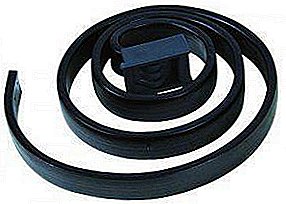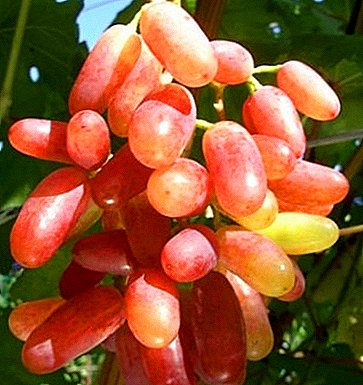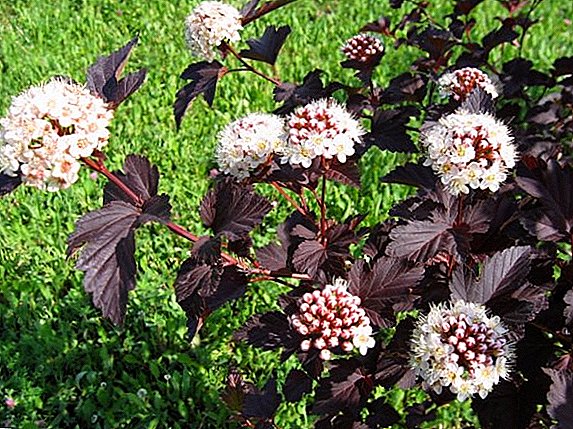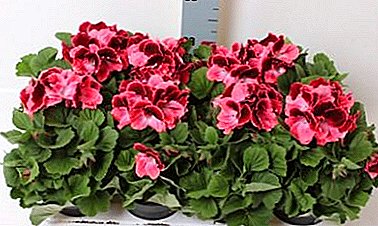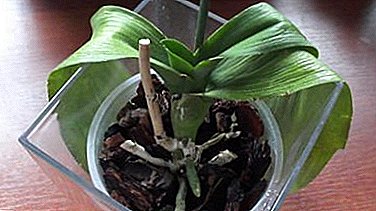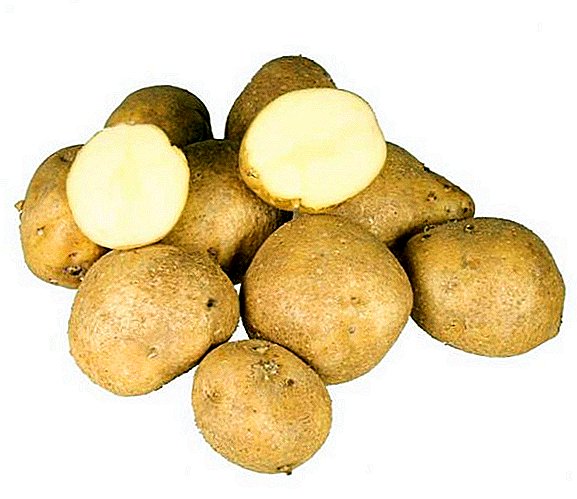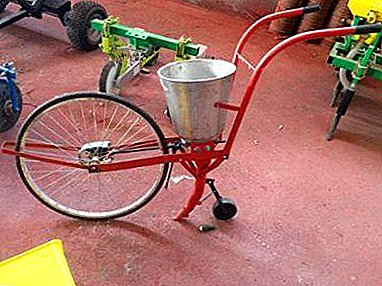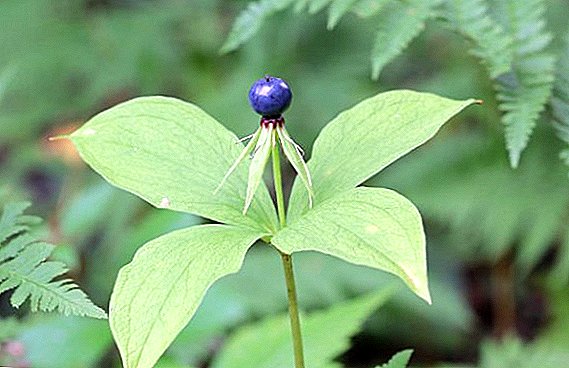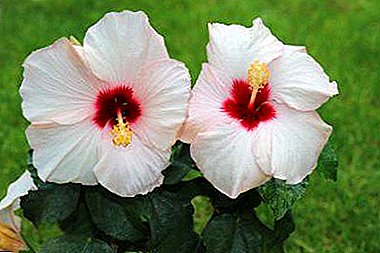
Hibiscus is a plant of the family Malvaceae. It is also called the flower of love, the flower of death and the flower of beautiful women.
The plant loves a humid and hot climate, and is the national flower of the Hawaiian Islands. It is hibiscus necklaces made to meet tourists there.
In our article we look at the most famous varieties of this beautiful flower. Let's talk about the rules of care for him. You can also watch a useful video on this topic.
Popular species and varieties
Hybrid hibiscus are bred by crossing plant species such as marsh, bright red and Norway. The flowers of a herbaceous perennial plant are very large and bright..
Copper King

Hibiscus hybrid Copper King (Hibiscus moscheutos Kopper King) hails from Lincoln, Nebraska (USA). He was taken out by the Fleming brothers. A perennial hybrid plant. Maintains frosts to-30 degrees. It hibernates like peonies, by buds in the ground, dying off for the winter, which is what determines its frost resistance.
In the spring the plant grows very quickly to 120 cm, the bush is compact, strong and rounded. The foliage is coppery. Flowers are up to 30 cm in size, pink-white with a red eye and rays on the petals. It blooms from June to October. The plant feels best in the sun or in partial shade, in the shadow of the foliage will not be so spectacular.
Plum Crazy

Plum Crazy (Hibiscus moscheutos Plum Crazy) is a perennial plant up to 150 cm in height. Flowers are from 20 to 30 cm in diameter, blue with purple veins (therefore this variety is also called “Crazy Plum”), the center is darker, the edges are corrugated.
Plum Crazy maintains frost down to -30 degrees, since the aboveground part is cut off and dies, from the powerful rhizomes that remain in the ground, new shoots spring up, which grow very quickly. The soil of Plum Crazy is not demanding, there is relative resistance to drought and high resistance to diseases. It blooms from June to October.
Old yella

Hibiscus Old Yella (Hibiscus moscheutos Old Yella) up to 120 cm high, has a rounded crown with 3-5 finger-like leaves that resemble maple leaves. The color of the leaves - green, but after a long stay in the sun acquire a purple hue. The flowers at Old Yella are huge, wavy, 30 cm in diameter, creamy lemon white in color with a small red eye. Old Yella blooms from July to late September.
Board: In order to fully reveal the beauty of the plant, it is necessary to plant it in a sunny place.
Soil flower likes nutritious, moderately moist, without stagnant water. Due to the extinction of the aerial part, the shrub tolerates frost well to -30 degrees.
Robert Fleming

Hibiscus Robert Fleming (Hibiscus moscheutos Robert Fleming) in a temperate climate zone grows up to a meter in height, with a compact, strong and slightly rounded bush. Maple-like leaves, 3-5 finger-like, glossy, green. The flowers are bright red, with a dark eye and wavy petals placed on each other, have a diameter of 30 cm.
The plant is resistant to diseases. Watering requires regular and abundant.
Cranberry Crash

Hybrid Cranberry Crash (Hibiscus moscheutos Cranberry Crush) popularly has the name "Cranberry pulp". The shrub grows lush, rounded, up to 120 cm high and with a width of 60-90 cm with landscaping from the roots.
The foliage is pinnate, green with purple veins. Flowers with a diameter of up to 25 cm, color - rich burgundy or crimson-red, dark stripes on the wavy petals. Cranberry Crash frost-resistant (up to -30), winters in the ground. It blooms all summer until mid-September.
Fireball

Fireball (Hibiscus moscheutos Fireball) up to 120 cm high, crown rounded and compact. The leaves are similar to maple, green, with purple edges and veins. Flowers are fiery-red, up to 30 cm in diameter with wavy, overlying each other petals.
Fireball loves nutritious soil, fertilized with organic, when watering should avoid stagnant water. The plant overwinters in the soil, like peonies, at temperatures up to -30 degrees. It blooms from July to September.
Satellite

The satellite (Hibiscus moscheutos Satellite) is lower than other hybrid species, its height is only 75 cm. The foliage of the young plant is dark green with purple veins, under the sun's rays the whole leaf becomes green-violet. A flower with a diameter of 25 cm, purple-crimson color, the petals are on each other. The bush is frost-resistant, as well as all similar to it grassy hibiscus winters in the ground at temperatures up to -30 degrees.
Kui Nuku

Hybrid Kui Nuku (Hibiscus moscheutos Kui Nuku) height of 90 cm. The foliage is dark green, with time it becomes dark purple. The flower is large, its diameter is 25 cm. The petals are purple-pink in color, there are 5 flowers in one flower, which are found one upon another. The middle of the flower is darker. It hibernates in the ground at temperatures up to -30 degrees, in the mulch soil.
Small wanders

Small Wanders (Hibiscus moscheutos Small Wonders) of medium height. The bush is compact, the adult plant grows from 75 to 90 cm. Small Wanders' foliage is dark green, turning to maroon to the edges. A variety of hibiscus hybrid Small Wanders frost-resistant.
Little Prince

Little Prince (Hibiscus moscheutos Little Prince) - short, its height does not exceed 60 cm. The foliage of the plant is green, and the diameter of the flower reaches 25 cm. The color of the petals varies from white to pink-red. The flowering of Little Prince is abundant and long, undersized shrub all sprinkled with huge flowers that give the plant an exotic look.
Flowering begins in the spring and continues until late autumn. After the end of flowering and with the appearance of the first frost, the aerial part is cut off, and the plant overwinters in the mulch earth.
Care features
- Top dressing. Well perceives organic fertilizers. For faster growth and long-term flowering, hibiscus should be fed as follows: in the spring with nitrogen fertilizers, from July - with potassium fertilizers.
- Wintering. Hybrid hibiscus winter as peonies, buds in the ground. Powerful root system withstands temperatures down to -30 degrees. Therefore, winter shelter is necessary above the latitude of Moscow.
Important: Before winter, the stems of all hybrid hibiscus varieties hibernating buds in the ground must be cut to 10-15 cm. In the fall, the rhizomes of the hybrid must be mulched - sprinkled with dry fallen leaves, so the underground part of the plant will not die even in a harsh snow-free winter.
- Watering. The stagnation of water does not like, as well as lack of - the plant lowers the leaves. Watering is necessary moderate, after complete drying of the soil. If the weather is dry, then it is necessary to water every day.
- Bloom. To bloom was powerful, you must adhere to the following rules:
- Plant in a sunny place.
- Feed during the entire period of flowering.
- Prevent obvetrivaniye (keep from drafts).
To hibiscus bloom early, in early spring mulch is removed and a small greenhouse is made, which is removed with the onset of heat. Flowers after withering need to pinch to give the bush a neat look.
- The soil. The soil near the hibiscus should be periodically loosen and destroy weeds.
Landing features
- Hibiscus is a southern plant, so it should be planted in a warm, sunny place, protected from drafts. Even planting in the penumbra is undesirable, since the plant can lose some of its decorative qualities. With the right choice of landing site, a hybrid hibiscus can grow up to 20 years.
- Hybrids are planted in spring. The pit is harvested more than twice as much as the root system of the plant, a drainage of broken brick and sand is laid down at the bottom, a root ball is installed and covered with fertilized soil. After planting the flower is watered.
- Hybrid hibiscus do not tolerate stagnant moisture, so a drainage layer is necessary.
We recommend watching a video about planting hibiscus in the garden:
Conclusion
Any type of hybrid hibiscus will be a great design solution for decorating the garden, cottages, or even a house plot. Possessing even one copy, the attention of all flower growers, gardeners or friends is ensured. After all, it is impossible to pass indifferently by the plant, which has bright flowers the size of a large saucer, and leaves of unusual shape and color.


